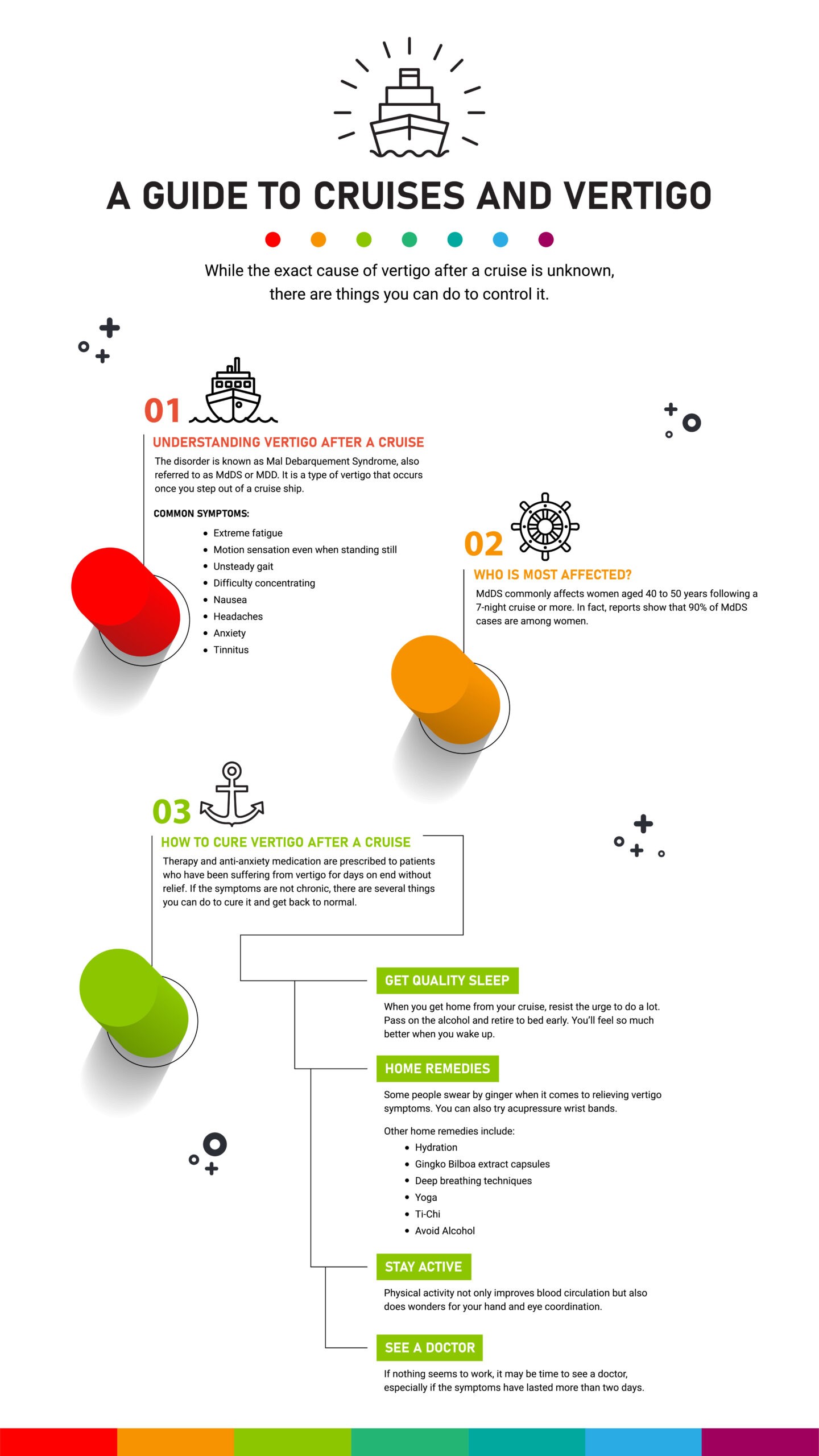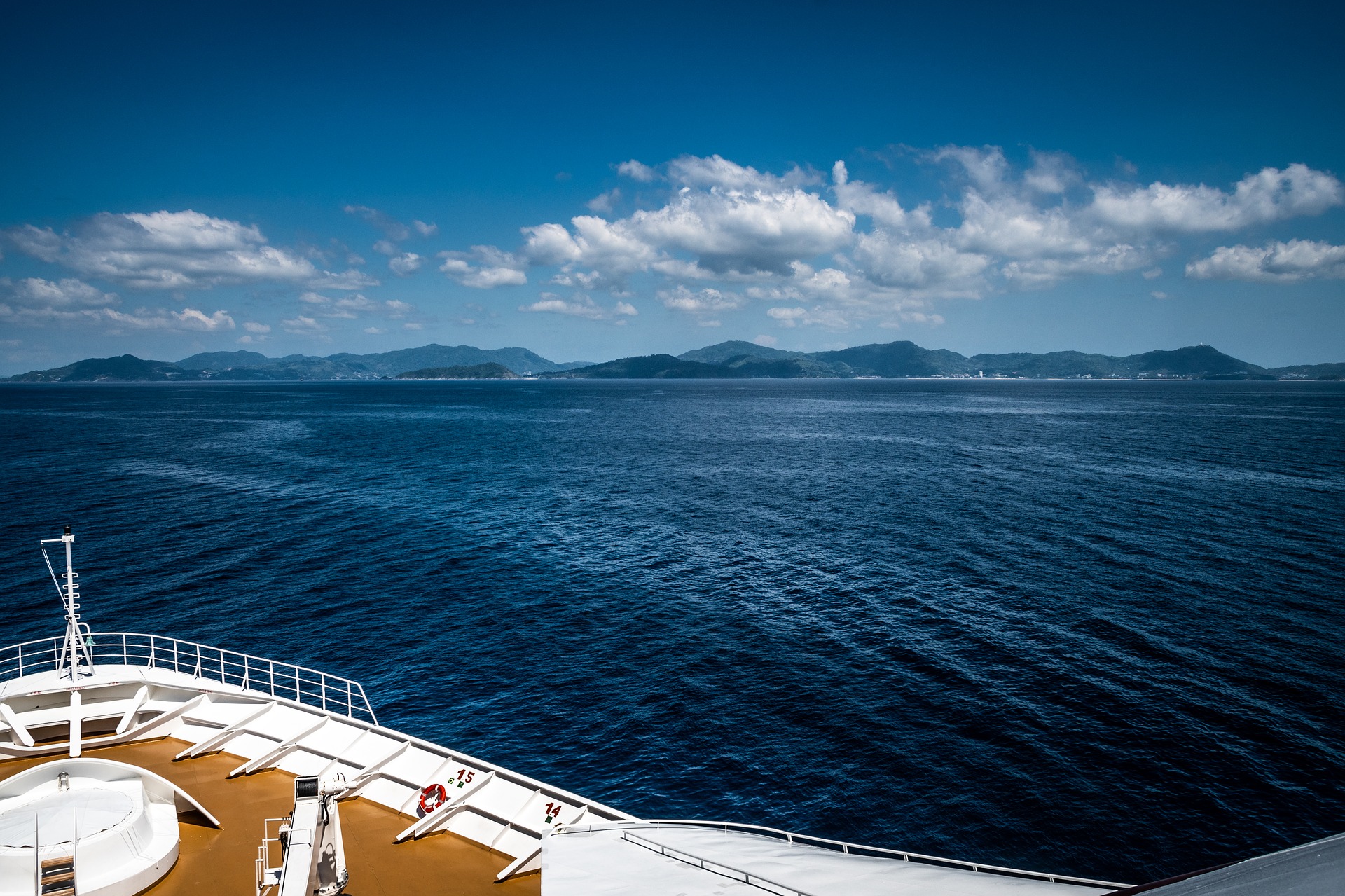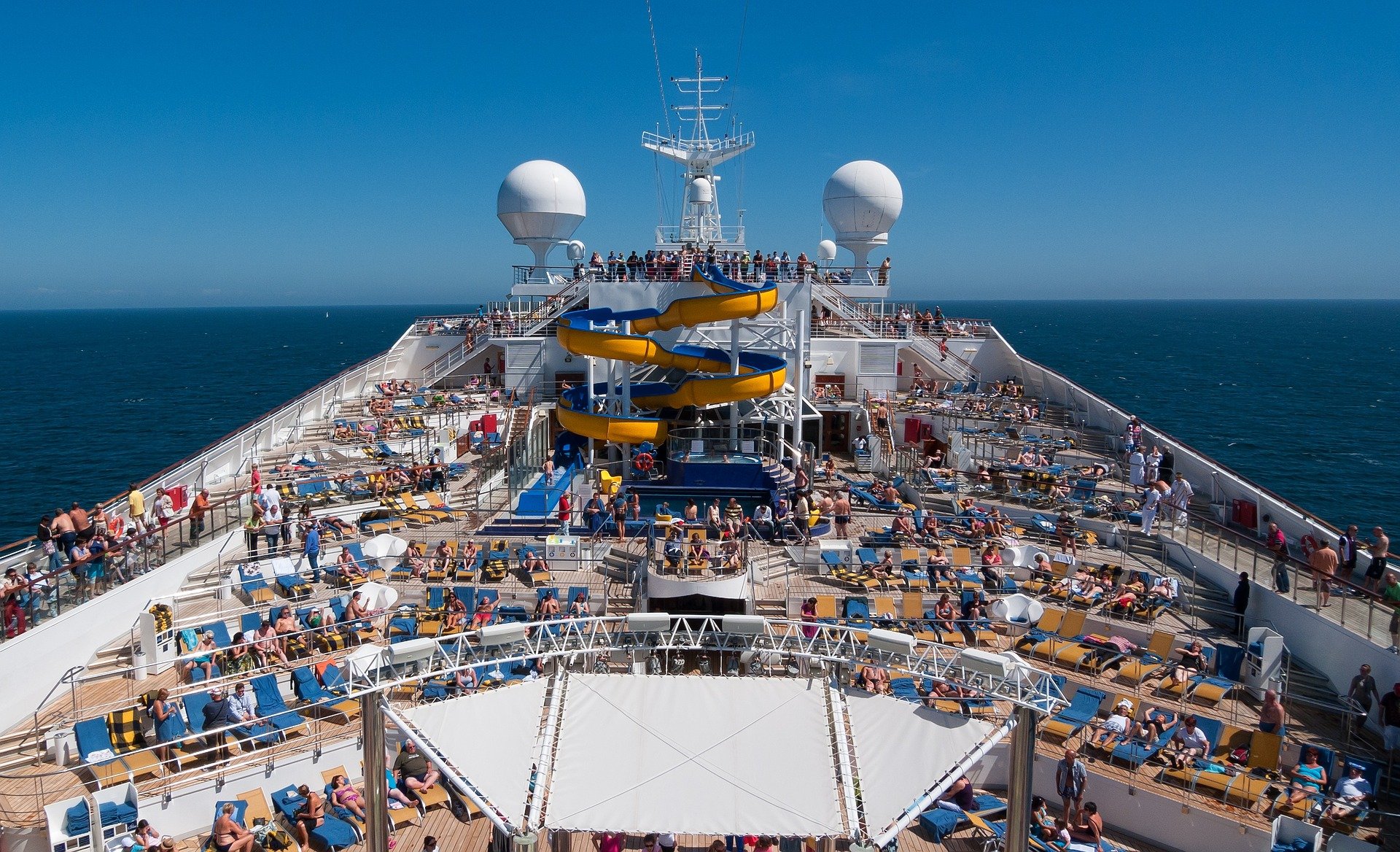Vertigo after a cruise ship vacation is quite common, especially among first-time cruise passengers. You’ll notice that the swaying and dizzy feeling that comes while you’re on board doesn’t go away even when you’ve disembarked from the ship. You may also find it difficult to gauge the distance from your foot to the floor and occasionally bump into objects trying to find your balance.
While the exact cause of vertigo after a cruise is unknown, there are things you can do to control it. First, you can give it time to pass on its own. It takes about two days for the symptoms to go away. If they don’t, it may be time to seek medical intervention.
Understanding how vertigo happens and what to expect will help you deal with the condition more effectively. We’ve provided a comprehensive guide on vertigo after a cruise and how to manage it. Let’s dive right in.

Understanding Vertigo after a Cruise Ship Vacation
You’ve returned home from a cruise, but your body still feels like you’re on the ship. You try to sleep or lie down, but everything around you seems to be moving. Sometimes you feel like your body is rocking or swaying and your legs seem weak. What’s happening?
The disorder is known as Mal de Debarquement Syndrome, also referred to as MdDS or MDD. It is a type of vertigo that occurs once you step out of a cruise ship. Most people experience the symptoms for a day or two, and they go back to normal. However, the symptoms persist for weeks or longer in some returning vacationers.
Common Symptoms
Individuals suffering from vertigo describe a feeling that’s equivalent to trying to walk on a trampoline. The symptoms begin as soon as one steps out of the cruise ship. Most people feel dizzy and find it hard to find their balance. Also, the symptoms seem to subside when one is in motion and reappear when they’re standing still.
Some of the common symptoms of vertigo after a cruise ship include:
- Extreme fatigue
- Motion sensation even when one is standing still
- Unsteady gait
- Difficulty concentrating
- Nausea
- Headaches
- Anxiety
- Tinnitus
- Ear ringing
The symptoms vary from one day to another and can present differently for different people as well. However, they are worse during the night.
Source: Travel Tips USA Today
Who Is Most Affected?
MdDS commonly affects women aged 40 to 50 years following a 7-night cruise or more. In fact, reports show that 90% of MdDs cases are among women. The condition typically lasts for about a month or less but can continue longer than this.
What Causes Vertigo after Cruise Ship Vacation?
Understanding the course of this condition is the first step to finding a solution. Unfortunately, despite extensive research, scientists haven’t found the real cause of vertigo. However, findings show that it may be caused by the following:
Hormonal Changes
Some specialists speculate that hormonal changes and anxiety in middle-aged women may be a cause of vertigo after leaving a cruise ship. However, there isn’t enough evidence to support this.
Brain and Body Adaptations to Ship Movements
Another possible cause of vertigo is your body and brain’s natural adjustments to the movements of the ship. Your brain anticipates the swaying movements, thereby preventing you from falling. In turn, your body follows suit and this becomes our “normal” state.
After the cruise, your brain takes some time to get back to normal, hence the symptoms you experience. You’ll feel as if you’re still on the ship and everything around you will appear to be in motion. This explains why the symptoms seem to disappear when you get into a moving vehicle or you engage in an activity that requires a lot of movement. In most cases, this feeling will pass on its own after a few days.
Migraines
Dizziness experts also believe that migraines may cause MdDS and increase the risk of motion sickness. A study showed that patients who were exposed to motion around the time of their period (commonly accompanied by migraines) experienced MdDS. This theory explains why some women have better tolerance for some cruises than others. However, there isn’t sufficient evidence to support this theory.
Source: Dizziness and Balance
Source: NHS Inform
Treatment Options
If you’re diagnosed with Mal de Debarquement, your doctor will most likely advise you to see a physical therapist specializing in vestibular rehabilitation. The program involves various exercises aimed at improving balance and reducing dizziness-related symptoms.
After a few months of the therapy sessions, you should notice an improvement in your symptoms. However, going on another cruise or any activity that triggers Mal de Debarquement may cause another episode.
Your doctor may also prescribe some anti-anxiety medication that’s meant to be taken for a short while. Once the symptoms have begun, motion-sickness medicines won’t help.
Source: Cleveland Clinic
How to Cure Vertigo after a Cruise Ship Vacation
Therapy and anti-anxiety medication are prescribed to patients who have been suffering from vertigo for days on end without relief. If the symptoms are not chronic, there are several things you can do to cure it and get back to normal.
Get Quality Sleep
Getting enough sleep after a cruise can be all your body needs to heal and reset. When you get home from your cruise, resist the urge to do a lot. Pass on the alcohol and retire to bed early. You’ll feel so much better when you wake up.
If rest doesn’t do it, wait it out a few days. In most cases, the symptoms subside on their own after two or more days.
Try Some Vertigo-Easing Home Remedies
Some people swear by ginger when it comes to relieving vertigo symptoms. For the best results, make a drink from fresh ginger. You can also try acupressure wrist bands, which are excellent for relieving sea-sickness and are believed to be equally beneficial for curing post-cruise vertigo.
Other home remedies believed to ease the symptoms include:
- Hydration
- Gingko Biloba extract capsules
- Deep breathing techniques to ease stress
- Yoga
- Ti-Chi
- Avoiding alcohol
Stay Active
As we mentioned, vertigo seems to get better when you’re in motion. Therefore, when you start experiencing these symptoms, it’s crucial to stay active. Physical activity not only improves blood circulation but also does wonders for your hand and eye coordination.
See a Doctor
If you tried sleeping, home remedies, and physical activity, and nothing seems to work; it may be time to see a doctor, especially if the symptoms have lasted more than two days. In this case, you may be suffering from a severe case of MdDS that requires medical intervention to cure.
Find Your Balance
Cruises are fun. You get to enjoy uninterrupted time and make lasting memories. But if you tend to suffer from land sickness, the aftermath of your cruise is far from fun. Most people have a difficult time doing basic things like taking a shower because everything seems to be spinning out of control.
It doesn’t have to come to this. If you’ve had this experience before, it may be a good idea to talk to your doctor before embarking on your trip. They may have some tricks to help you cope more effectively.
And if you’re already dealing with the symptoms, try the techniques listed in this article, they work wonders for less severe cases, and you’ll notice an improvement within a few days. However, if the symptoms persist, be sure to seek medical advice.






